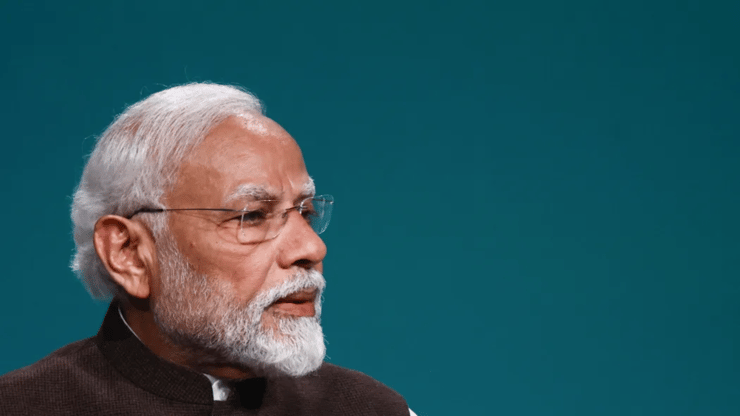‘Ram Bharose’ Is No More A Guarantee

Election 2024 has dealt a pyrrhic victory for the Bharatiya Janata Party. Requiring coalition partners to form its third consecutive government against exalted expectations almost feels like a defeat, as many commentators have said. What’s more, the party came a cropper even in the Faizabad constituency, where the Ayodhya Ram Mandir was built and inaugurated months before the elections. More on that later.
So, what caused this significant shift in the political landscape, particularly in the behemoth state of Uttar Pradesh, which can make or break electoral fortunes? There will be much soul searching in the BJP over the coming weeks and months, but our early analyses reveals the result seems to have been influenced by several strategic missteps and external factors.
Firstly, the BJP’s campaign slogan, “Ab ki baar 400-paar,” which promised an overwhelming victory, clearly backfired. That slogan seems to have influenced only the exit polls, as it turns out. The over-confident repetition of that overly ambitious target created a sense of complacency among party workers and supporters. The overconfidence led to a lack of grassroots mobilisation and a disconnect with the electorate’s evolving concerns on a scale that was seen in earlier elections. As a result, the party’s campaign seems to have lacked the vigour and personal engagement, contributing to the reduced margin of victory.
Secondly, there is strong speculation, and not without reason, that the usual robust on-ground support of the Rashtriya Swayamsevak Sangh (RSS), the BJP’s ideological parent, was not as strong as in previous outings, where it was instrumental in contributing to victories. This surmised decline in grassroots support seems to have weakened the BJP’s outreach, in rural and semi-urban areas, especially to counter the twin bogie men successfully created opposition alliance: Constitutional changes and the scrapping of quotas and reservations if the NDA came back to power.
On its part, the BJP also failed to effectively counter opposition rumours. The opposition’s campaign successfully sowed fear and uncertainty among voters, particularly within marginalised communities that depend on affirmative action policies. The BJP’s inability to address these rumours head-on allowed them to fester, resulting in a loss of trust among crucial voter segments.
Candidate selection was another critical area where the BJP faltered. Unlike opposition parties that strategically fielded candidates based on caste dynamics, the BJP does not appear to have adequately considered these social factors. In states like Uttar Pradesh, where caste politics plays a significant role, this oversight proved costly. Learning from leaders like Akhilesh Yadav, who skilfully navigates caste equations, could be vital for the BJP in future elections.
The BJP also seems to have neglected to engage with the Muslim electorate effectively. The party’s messaging did not resonate with the Muslim community, which historically votes as a bloc. This election saw an even more consolidated Muslim vote against the BJP, highlighting the party’s failure to address their concerns and aspirations meaningfully.
The shock result in UP has given credence to the long suspected internal discord within the BJP. This internal disunity contrasted sharply with the opposition’s more united front, in spite of the rag-tag image that they initially projected, amplifying the BJP’s challenges in key battleground states.
It turns out that BJP wunderkind Yogi Adityanath, the Chief Minister of Uttar Pradesh, whose support was heavily relied upon, did not deliver the anticipated results. His popularity and effectiveness seem to have been overestimated, and the reliance on his appeal did not translate into votes.
Additionally, voters in Uttar Pradesh were not convinced by the ‘Modi guarantee.’ Instead, they were swayed by localised issues and the opposition’s targeted campaign strategies, which the BJP failed to counter effectively. The opposition’s emphasis on immediate, tangible benefits (khata-khat) and local governance issues resonated more with voters than the BJP’s broader national narratives.
The defeat in constituencies like Faizabad, home to the iconic Ayodhya Ram Mandir, was particularly striking. The BJP had banked on the temple issue to unite Hindu voters under a common religious identity. However, this strategy overlooked the inherent secular and inclusive nature of Sanatan Dharma, which resists politicisation. The electorate’s message was clear: gratitude for the Ram Mandir does not translate into political support if the party is perceived as exploiting religious sentiments for electoral gains.
The BJP must now recalibrate its approach, looking beyond faith to unite Hindus politically. Emphasising the broader aspects of Sanatan Dharma, including the inclusive and secular traditions, that are embedded in its ethos across millennia. The BJP must also address the socio-economic concerns of marginalised groups, ensuring that its “sabka saath” mantra genuinely includes all sections of society.
The reduced margin in the latest elections serves as a critical wake-up call for the BJP. To sustain its dominance, the party must introspect, address its strategic missteps, and reconnect with the diverse electorate that holds the true power in the world’s biggest democracy.





